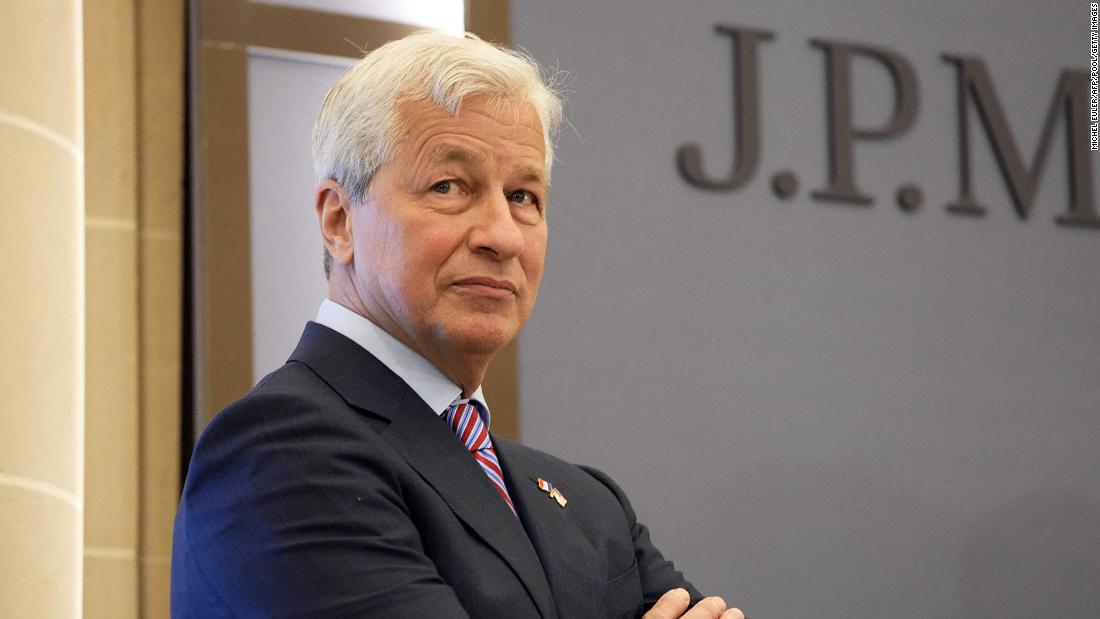(Slight spoilers follow for several films in the Mad Max series, including Furiosa: A Mad Max Saga.)
The Mad Max films, the brainchildren of visionary Australian director George Miller, exist in a perpetual “now.” Beginning with 1979’s Mad Max, they tell the story of Max Rockatansky, a former cop who roams the post-apocalyptic Wasteland (of what used to be Australia), trying his best to survive in a world that has lost its mind. While Max is played in each of the first three installments by the same actor (Mel Gibson), and certain character elements recur throughout the franchise, the films do not exist in a strict continuity. Some aspects of certain entries are inconsistent or outright contradictory with aspects of other entries; Miller has stated that he sees Mad Max as a series of legends about the titular character, the kinds of campfire stories that might be passed around in the Wasteland at dark.
But the ahistorical nature of Mad Max runs deeper than that. Mad Max films tend to be very high-octane and propulsive, focused on immediate objectives—protecting an oil refinery from marauders in 1981’s Mad Max 2: The Road Warrior, or cutting a deal for supplies with the leader of a trading outpost in 1985’s Mad Max Beyond Thunderdome. There isn’t a lot of downtime for introspection; character and narrative are defined primarily through action, and the stories tend to cover brief time periods. We get in and get out, left reeling by their breakneck pace and relentless imagination. This has the effect of making it seem like the present is all that matters—why would anything else, given how intense things are right now?
Furthermore, the characters themselves have a complicated relationship with history. For the denizens of the Wasteland, history is an abstraction, mattering far less than the realities of day-to-day survival in a world with rapidly dwindling resources and increasingly deranged aggressors. Remnants of the old world exist in repurposed vehicles and scattered artifacts, and characters sometimes talk about what it was like before, but usually in ways that make it seem like just a story—and if they’re old enough to actually remember the old world, they usually ignore it in order to focus on the task at hand.
As for history within the time of the Wasteland, some of the films end with a coda that details how later generations will remember Max’s exploits, thus casting what we’ve just seen somewhat as a re-telling, but for the most part, there doesn’t seem to be much of an internal chronology, a sense of before and after. Max appears in a place, does a job, and then leaves. Certain things seem to have lore—rather like Star Wars, Mad Max is populated with colorful characters that have a lot of specific details you want to know more about, but where they come from is always less important than where they are now. History is a luxury. The past is a distant memory, and the future is not a foregone conclusion.
What a strange beast, then, is the new film Furiosa (full title: Furiosa: A Mad Max Saga), which premiered this year at the Cannes Film Festival. For the first time, George Miller has created a movie that is directly, intimately related to another in the Mad Max canon—2015’s Mad Max: Fury Road. Fury Road introduced the instantly iconic character Furiosa (played by Charlize Theron), the most trusted Imperator of the cruel warlord Immortan Joe; she drives his War Rig on the treacherous Fury Road to neighboring settlements to deliver shipments and bring back supplies. That film sees Furiosa use her position to secretly smuggle out Immortan Joe’s enslaved wives, in a desperate bid for some kind of redemption that goes unexplained, merely hinted at and felt.
Furiosa takes it upon itself to fill in those gaps, a direct prequel to Fury Road that unfurls in novelistic fashion (it is even divided into five distinct chapters with corresponding titles that appear on screen). The film begins with Furiosa as a child, played by Alyla Browne, living in the fabled Green Place, an abundant oasis in the midst of the vast desert of the Wasteland. One day, Furiosa is kidnapped by raiders working for Dementus (Chris Hemsworth), the unhinged and capricious leader of a bloodthirsty biker gang. When Furiosa’s mother attempts to rescue her, Dementus kills her in front of the traumatized Furiosa, and takes her under his wing in a warped sort of mentorship.
It is at this point that both Furiosa the film and Furiosa the character start to intersect more heavily with the world established by Fury Road. Dementus learns of Immortan Joe’s Citadel, a place with access to water and fresh produce, and he makes a misguided attempt to conquer it, but is easily thwarted by Immortan Joe (played in Fury Road by Hugh Keays-Byrne; now played by Lachy Hulme) and his cultishly-devoted War Boys; Dementus then switches gears and takes over nearby Gastown, the Citadel’s supplier of gasoline (or guzzoline, in the parlance of the series).
At peace negotiations after Dementus’ conquest, he trades Furiosa to Immortan Joe as a child bride in order to cement his authority over Gastown. Furiosa is then left at the mercy of the Immortan and the rigid war-like society he has created, but she uses her wits and guile to avert her fate and ascend the ranks of the Citadel; as a young adult now played by Anya Taylor-Joy, she secures a position on Immortan Joe’s War Rig, with her mind set on three goals: survive at all costs, exact revenge on Dementus for killing her mother, and return home to the Green Place.
Furiosa had a lot to live up to. Each Mad Max installment is worthwhile and has made a lasting cultural impression to at least some degree, but Fury Road, a critical sensation that was nominated for ten Academy Awards including Best Picture (ultimately winning six), arguably reached new peaks of relevance and ubiquity for the franchise on the whole. This is due to many factors, but chief among them is the character of Furiosa, a feminist icon in the previously male-dominated series. Charlize Theron’s performance spoke to a cultural need and became indelible, so anyone looking to step into the role would have very big shoes to fill.
But Alyla Browne and Anya Taylor-Joy are both impressive in the role. Their Furiosa is very different from Theron’s version (though obviously not so different that they don’t feel like the same character). While the Furiosa of Fury Road is hardly a motormouth, in the prequel she is nearly completely silent, having to conceal her true identity for large swaths of the film. Browne and Taylor-Joy are able to convey so much without words—even as other characters make more noise, they command the frame, speaking volumes with mere facial expressions.
Previously, we met a Furiosa driven by her quest for redemption, but this Furiosa is fueled by righteous anger, a much darker iteration of the character. Taylor-Joy, one of cinema’s most exciting actors already, gives one of her most layered and subtle performances, finding both Furiosa’s rage and her vulnerability, never letting one negate the other. Knowing that Furiosa will eventually be redeemed allows Miller and the performers to push our hero into increasingly disturbing directions, and the result is thrilling and cathartic to watch.
But perhaps equally as memorable is Chris Hemsworth as Dementus (in some ways, the co-lead of the film). In Hemsworth’s hands, Dementus is a fascinating creation, unique in the pantheon of the series. While Mad Max villains are not typically totally devoid of pathos, rarely have we wallowed in it so completely. Dementus is both terrifying and pathetic in equal measure—a sadistic petty tyrant who also seems to care about Furiosa is some warped way, who wears the teddy bear of his deceased children around his belt (interestingly, if we are to consider Max as a character with an internally consistent backstory, then both the series protagonist and this film’s villain share the same trauma in their past).
Dementus is driven to acquire power, but seems utterly miserable whenever he has it—years of ineffectually ruling Gastown, to the increasing frustration and resentment of its inhabitants, have not filled the hole in his twisted heart, yet he keeps going, seemingly because that is what the Wasteland demands of him. All the while, he is an extremely comical figure, whether he is addressing a crowd as “lady and gentlemens,” or exhorting his gang’s History Man, the keeper of facts about the past, for a “wordburger.” Hemsworth juggles all these tones (comedy, drama, and horror) and navigates it all wonderfully, playing both manic violence and petulant depression—making Dementus arguably the most complex antagonist in the history of the Mad Max saga.
Watching Furiosa, I was struck by how compellingly the film built out the world of Fury Road. We are dropped into that film with little to no context—there is a Citadel, nearby are Gastown and the Bullet Farm. The Citadel gets gas from Gastown and bullets from the Bullet Farm. Simple and straightforward. But here, we learn that there is an intricate relationship between the various entities of the Wasteland. They have to enact rules of trade and negotiate treaties; when one warlord is overthrown, the others must gather to work out new arrangements. In some cases, in lesser filmmakers’ hands, this might seem like it would demystify what was so enjoyable about the original entry, but here I found it thoroughly additive.
Mad Max films can typically feel like fever dreams of inventive action, but Furiosa has other things on its mind. It reminds us that this is a world, a real world that people are forced to live in. We normally only experience it in brief bursts, but each character has lived an entire life to get to the point at which we meet them. This is Furiosa’s.
I want to return to the idea with which I began this review, the idea of history. The fact that Furiosa spans over a decade, rather than most Mad Max films which seem to span over days or weeks at the most, instantly sets it apart. For the first time, we get to see a kind of history unfold—we meet Furiosa as a child, we watch as she becomes an adult, the world changes around her. The film functions largely as a biography of its title character, like David Copperfield or Oliver Twist. Many critics have noted the Dickensian nature of Furiosa, considering its episodic structure spanning years, but also in how it depicts a society and its ills developing over time.
But this is more than an aesthetic; Furiosa is telling a grand narrative about the history of the Wasteland, as Dickens did with his tales of industrial cities—just swap out the impoverished children in Victorian workhouses for War Boys in the Citadel. The people within these places have to push back against forces which attempt to make them as faceless, as forgotten, as transient as possible. Bleak House, for example, asserts that time and place have the power to engulf and erase individuals, and simultaneously offers a formal way (through the very act of telling the story) to push back against this.
So too does Furiosa. Consider the History Man (George Shevtsov), Dementus’ trusted adviser (who is later traded to Immortan Joe as an object of strategic value). At the end of Mad Max: Fury Road, a quote appears on screen attributed to “The First History Man”: “Where must we go… we who wander this Wasteland in search of our better selves?” While the source of this quote (or even what exactly a “History Man” is) goes unexplained in that film, we get more context here in Furiosa. Dementus’ History Man is covered head-to-toe in tattoos representing details of the past—he is, quite literally, a living document of history, the receptacle of recorded memory. When Dementus wants to understand something from long ago, he consults the History Man.
As strange as it may seem given how much the rest of the world has fallen apart, there is a cachet to having that level of access to a time before. When the History Man meets the young Furiosa, he tries to keep her alive by recommending she make herself “indispensable.” He sees her importance, her value. In a way, she takes his advice. By the end of the film, the History Man is not just telling stories of the old world—he is telling Furiosa’s story, thus placing her in the canon. What was once relegated predominantly to codas in other films has now been threaded throughout this entire film and made text, not just subtext. We are watching the formation of history take place before our very eyes.
The protracted storytelling doesn’t mean it is any less pulse-pounding than any of the other entries—a particular action sequence set on the War Rig as it is beset by raiders is one of the most ambitious setpieces Miller has ever filmed—but it does mean it is also far more meditative. It is also, perhaps somewhat paradoxically, given just how dark and upsetting the story gets, the most hopeful Mad Max film. It is one thing to see Furiosa embark on her journey of redemption in Fury Road; it is another thing entirely to fully understand the weight of everything that happened to her to bring her to that point.
Everything she goes through has ramifications within the film itself but also beyond. It makes that redemption so much more powerful. If this is a world in which history can happen, if it can escape the perpetual now it has existed in for so long and have its characters accumulate lessons over the course of their lives, it is a world that is capable of getting better. Maybe it doesn’t have to be a Wasteland forever.
George Miller has been living in that Wasteland, off and on, since 1979. With this series, he has pushed the boundaries of what an action film, what a sci-fi film, what a film, period, can be. With Furiosa, he has redefined what a Mad Max film can be. I hope he never stops making them.


























































